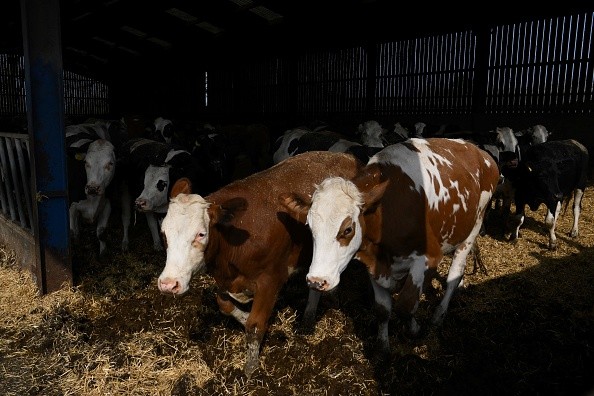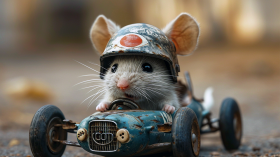The heart of calving season is about halfway through the month of April, and for ranchers in the northern Plains, the blast of winter weather will risk the lives of their most vulnerable animals.
As a spring snowfall rips through the middle of the country, some ranchers are hunkering down in preparation for what could be a perilous situation for their herds.
AccuWeather analysts are predicting a "storm of the century" this week across sections of the northern Plains, challenging snowfall records set by previous cattle-killing blizzards.
The storm is forecast to meander eastward from the Rockies before reaching Canada, but not without hitting a few farms during calving season.
Cold weather affects the lives of newborn cattle
 (Photo : DANIEL LEAL/AFP via Getty Images)
(Photo : DANIEL LEAL/AFP via Getty Images)

Katelyn Dynneson-Larson has been prepping her herd at Dynneson Ranch in Sidney, Montana, on the western border of North Dakota, for the previous several days.
While her Gelbvieh cross cows are well-suited to the cold, the newborn calves will require considerably more effort to keep warm and secure.
"The biggest issue is that we have been so warm recently, so it will come as a surprise to everyone," Dynneson-Larson explained.
According to the U.S. Department of Agriculture, the storm will be a double-edged sword for farms in Richland County, in which the Dynneson Ranch is located, because the area is also facing exceptional drought conditions.
So, while the storm will bring snow and ice to her calves, Dynneson-Larson is looking forward to the dry season coming to an end.
The muck and dampness will be a welcome relief from the dust that has plagued us for the previous two years, she remarked.
They need this precipitation to get the grass growing so the cows can graze this summer.
Whitney Klasna of Klasna Farms, also in Richland County, told that her ranch "urgently" needs the storm's precipitation, adding that the region has been on the Drought Monitor map since May 2020, and has been classed as a D3-D4 drought since the spring of 2021.
The ratings of D3 and D4 on the U.S. Drought Monitor represent extreme and exceptional drought conditions, with consequences ranging from livestock culling and early sale to widespread pasture loss.
Read more: Brazilian Cattle Ranchers Uses Innovative Technique to Reduce Emission Caused by Livestock
Cold stress to cattle
Hypothermia occurs when the temperature decreases significantly below normal.
In cattle, mild hypothermia occurs when the body temperature is 30°C-32°C (86°F-89°F), moderate hypothermia happens when the body temperature is 22°F-29°C (71°F-85°F), and severe hypothermia occurs when the body temperature is below 20°C (68°F), as per OMAFRA
Cows are unable to restore to normal temperature when their rectal temperature falls below 28°C (82°F) without the aid of warming and the introduction of warm fluids.
As hypothermia advances, metabolic and physiological processes halt, and blood is redirected away from the extremities to preserve essential organs.
Teats, ears, and testicles are vulnerable to frostbite. Animals lose consciousness and die when their breathing and heart rate drop to extremes.
Cows, particularly heifers who are losing weight, calve in poor condition. Increased calving problems, a rise in the number of lighter, weaker calves, and greater calf mortality are the results.
These dams produce less colostrum (of inferior quality), have lower milk output, higher newborn mortality, and a worse growth rate in surviving calves.
These cows often have a delayed return to estrus, longer open days, and lower reproductive success.
Related article: Continuous Drought Results to One of The Worst Year for Cattle Farmers in California
© 2024 NatureWorldNews.com All rights reserved. Do not reproduce without permission.





